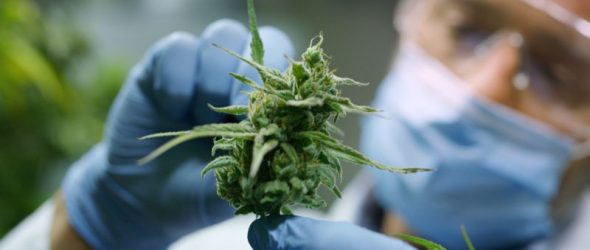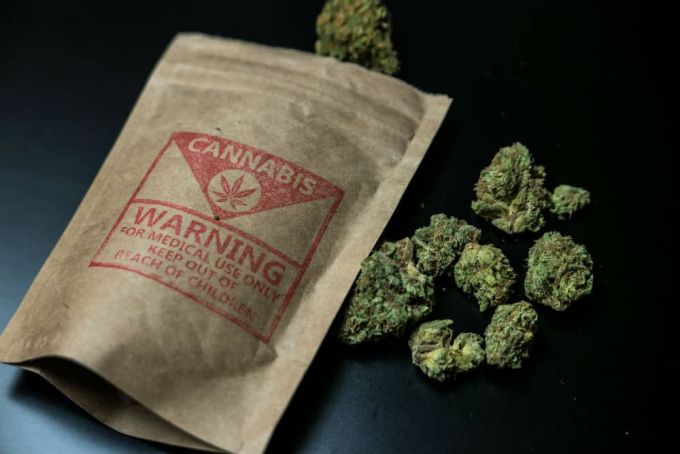Oh, the classic sights of Rome: ancient Roman ruins, cobblestone streets, picture-perfect restaurants, quaint leather shops, and… weed dispensaries.
Tourists in the Eternal City may be taken aback by a recent addition to the ancient cityscape: legal marijuana shops. They’re hard to miss, with storefronts plastered with bright green marijuana-leaf decals and the occasional flashing “LEGAL” sign.
Despite appearances, Rome is no Amsterdam. In 2016, Law 242 was passed in Italy, legalising the sale of cannabis products with a low level of THC, the psychoactive compound in marijuana. Thus, so-called “cannabis light” was born, and cannabis light dispensaries took Rome by storm.
Also read:
- A brief history of Italy’s most powerful mobs
What is cannabis light?
“Cannabis light” is a strain of cannabis that has a very low level of THC. AP News aptly describes cannabis light as the “decaf coffee” of marijuana. Though it is marketed as a marijuana-style product, it is more closely related to hemp. The common differentiation between hemp and marijuana is found in the THC level, as they are both similar looking (and smelling) subspecies of the cannabis sativa plant. Hemp usually has around a 0.3% THC level, whereas marijuana THC levels range from 4% to 20%.
The common THC level of cannabis light is 0.2% to 0.6%.
In Italy, cannabis light is sold in a dried form that looks identical to marijuana– so much so that it must be labelled as a collector’s item to evade laws regarding the sale of marijuana, and every package comes with a “not suitable for smoking” sticker.
There are many “strains” of cannabis light, with various names, colors, and characteristics. In many ways, the culture surrounding cannabis light mimics that of typical marijuana counter-culture, with one key difference: cannabis light probably won’t make you high.
Also read:
Why is cannabis light legal?
In 2016, Law 242 was passed to ease growing restrictions on industrial hemp farmers and encourage agricultural sustainability. Hemp cultivation is good for the environment for a variety of reasons: it grows quickly, requires little water, absorbs toxins and replenishes soil, and captures carbon dioxide more effectively than trees.
Hemp is a versatile plant that can be used to make food products, beauty products, clothing, paper, building supplies, and more. With the passing of Law 242, Italian lawmakers were setting the scene for a more environmentally-friendly agricultural landscape.
Here’s where cannabis light comes into play: because hemp naturally contains trace amounts of THC, a very low-level of THC was declared acceptable by law. Law 242 declared that hemp was legal for production and sale, and farmers would not be penalised for growing hemp with a THC level up to 0.6%. The comical side effect of legalised hemp production was the cannabis light industry, an industry with all of the talk and none of the walk of illegal cannabis.
Also read:
Nonetheless, cannabis light took Rome, and all of Italy, by storm. Hundreds of companies have been created since 2016, selling cannabis light and cannabis flavored and themed items, such as energy drinks, T-shirts, candles, and pipes. Some Italians quit their jobs or ended their businesses to open cannabis light dispensaries. The cannabis light industry has generated an estimated 40 million euro in revenue. Labeled “weak” at best and “useless” at worst by customers, cannabis light and cannabis light dispensaries still managed to spark political backlash.
In 2019, cannabis light was put on trial at the urgency of conservative politicians who had a moral objection to the cannabis light industry. Matteo Salvini, the leader of the League political party, said, “It is neither possible nor acceptable that in Italy there are 1,000 shops where there are drugs legally, in broad daylight.”
Also read:
The Supreme Court ruled that cannabis light and other cannabis sativa derivatives in the form of flowers, buds, leaves, and oils, could not be sold unless they did not produce a narcotic effect and were clearly not meant for human consumption–a confusing ruling considering the nature of cannabis light. For now, the issue seems to be on hold, and cannabis light dispensaries can still be found all over central Rome and all of Italy.
Is Italy on track to legalise marijuana?
In late 2019, Italian courts ruled that cannabis could be grown domestically, but only in small amounts. As of 2020, marijuana is decriminalised for possession and legal for medical use, but it is still illegal to sell and grow on a large scale.
Despite the buzz surrounding cannabis light, it is unlikely that marijuana will be legalised in Italy in the near future due to pressure from conservative political parties, such as the League and Forza Italia.
Where are cannabis light dispensaries located?
Cannabis light dispensaries can be found all over central Rome, and all of Italy. Many are stationary shops, while others come in the form of discreet vending machines.



